Each time I visit Hawaii, I am always blown away by the amount of stars I see at night. I absolutely love to gaze at Hawaii’s star-filled night sky.
I’m really just a stargazing novice. I enjoy and appreciate the vast amount of stars I see, but that’s really the extent of it. So, I’ve been wanting to learn more about astronomy in Hawaii for quite a long time and I was recently put in touch with the Maui Astronomy Club President, Becky Sydney, who graciously answered all my novice questions about Hawaii stargazing. I’m very pleased to be able to share Becky’s expert insight into Hawaii’s night sky with you. Below are the highlights from my interview with Becky Sydney.
Sheila: There are some major observatories on Mauna Kea and Haleakala. What makes Hawaii such a hot spot for astronomy observatories?
Becky Sydney: For Astronomers, the best ingredients for observing the night sky are: no light pollution, good year-long weather, high elevation and star visibility. Hawaii meets all this criteria very well with the exception of light pollution, which seems to be an increasing enigma on the islands.
I meet many visitors from the mainland and abroad who tell me they can’t see any stars at home because of lights. So it is no surprise that when they see the stars over Maui for the first time, they are mesmerized by how many they see and how bright! Ah, the things we take for granted.
Mauna Kea [Big Island] and Haleakala [Maui] enjoy nice weather most of the year. Both have high elevations, Mauna Kea at 14,000ft and Haleakala at 10,000ft. Positioned at 21 degrees N Latitude. from these mountain tops, you can not only see the Northern Hemisphere stars but also see most of the Southern Hemisphere stars too making Hawaii the only state in the United States that sees the North Star and the Southern Cross. Of all the stars the planet Earth can view, Hawaii can see over 80% of them! Once again, the only state in the USA where this is possible. These are just some of the reasons why Hawaii is the perfect place to observe the Universe.
Photo of Keck-2 telescope on Mauna Kea. Photo Credit: Paul Hirst by way of Creative Commons
Sheila: Andy and I like to go to the top of Haleakala on Maui early in the morning while it’s still very dark. From there, we’ve seen loads of what we call shooting stars. Are these really shooting stars or something else? Is there an optimal time for watching shooting stars?
Becky Sydney: Describing what a shooting star is…well, it kinda takes the romance out of it. Just think, that beautiful shooting star you saw…which meant so much and was so symbolic to you, as if the Heavens were speaking in their own language…with a bright gleaming vapor trail…How awesome it was to see that fleeting star fall right out of the sky for YOU.
Well, that is pretty cool but just as equally cool but in a different way, is knowing that it’s really not a shooting star you see, but a piece of space debris, no bigger than a grain of sand, vaporizing in Earth’s atmosphere! Wow! Isn’t it amazing that a speck of dust or rock or metal can make such a grand exit right over your head!
Scientifically speaking, “As a particle enters Earth’s atmosphere, it collides with gas atoms and molecules. The particle becomes wrapped in a glowing sheath of heated air and vaporized material boiled off its own surface. Meteors become visible at altitudes between 50 and 75 miles, with faster particles typically shining at greater heights. Many of the faster, brighter meteors may leave behind a train — a dimly glowing trail that persists for many seconds or, more rarely, minutes. Larger debris may create a fireball — a spectacular meteor bright enough to outshine even Venus. Occasionally, a fireball will fragment; this event is accompanied by bright flares and even “sparks” thrown a short distance from the meteor’s main trail. Such a fireball is called a bolide.” per this article on meteors from Astronomy.com.
So, however you want to see it, shooting stars are pretty amazing.
A meteor shower is a just that…a shower of meteors or shooting stars. This is caused by planet Earth plowing into the wake of space debris left behind by orbiting comets. Comets shed material (dust, gas, ice, etc.) as they orbit the Sun and when Earth passes through the debris, many particles burn up in the atmosphere, and look like stars falling from the sky. Some meteor showers record over 100 meteors an hour!
The most famous meteor shower of the year falls on August 11 -12 every year; it’s called the Perseid Meteor Shower because meteors ‘appear’ to radiate from the constellation Perseus. The particles you see burn up actually come from Comet Swift-Tuttle, a comet which passes by Earth every 130 years and leaves a dirty trail that the Earth passes through every year. The best time to watch the Perseids and most other meteor showers, is after midnight, when the constellation is higher in the sky and the angle of debris entry is best. Be sure to get away from city lights too or you’ll see nothing. I think that’s why people see more shooting stars in Hawaii than the mainland — there’s less light pollution.
For a list of yearly meteor showers, check out this Wikipedia Web site: http://en.wikipedia.org/wiki/List_of_meteor_showers
Sheila: What are the next major celestial events over the next year or two that you can see with the naked eye in Hawaii. Where would you advise that visitors go to watch these events?
Becky Sydney: Probably the most exciting event for Hawaii this year will be the July 22, 2009 total eclipse of the sun! However, Hawaii is barely in the “eclipse zone” and may only see a small effect; nevertheless, it will be a great spectacle event. Click this link for a complete list of Solar Eclipses and here are the descriptions of the types of Solar eclipses
- Partial Solar Eclipse- Moon’s penumbral (outer) shadow traverses Earth (umbral and antumbral shadows completely miss Earth)
- Annular Solar Eclipse- Moon’s antumbral shadow traverses Earth (Moon is too far from Earth to completely cover the Sun)
- Total Solar Eclipse- Moon’s umbral shadow traverses Earth (Moon is close enough to Earth to completely cover the Sun)
- Hybrid Solar Eclipse- Moon’s umbral and antumbral shadows traverse Earth (eclipse appears annular and total along different sections of its path). Hybrid eclipses are also known as annular-total eclipses.
We just missed a Prenumbral Lunar Eclipse in February, but there is yet another one on July 7, 2009, though it will be less impressive. For a complete list of Lunar Eclipses check out this list. Here’s a description of each type of eclipse:
- Prenumbral eclipse – the moon passes through Earth’s prenumbral (outer) shadow.
- Partial eclipse – the Moon passes through Earth’s umbral (inner) shadow. These are easy to see with the unaided eye.
- Total eclipse – the entire Moon passes through Earth’s umbral shadow. the Moon can turn orange, red, or dark brown.
The best places to see these events in Hawaii are in dark, clear areas. Mauna Kea [Big Island] or Haleakala [Maui] would be the BEST view points because these sites are high above the clouds and have the clearest visibility. On the beaches wouldn’t be bad either as long as the Sun and Moon aren’t blocked by trees or mountains at the time of the event.
Sheila: Any advice or other Web sites you would recommend for visitors to review before they go stargazing in Hawaii?
Becky Sydney: The most important thing when stargazing is be comfortable. This includes being dressed for all kinds of weather. At night, the temperatures are much cooler [especially in the higher elevations], even in Hawaii, so one must keep warm in order to stay outside to observe for hours. Take a sleeping bag or some blankets and lay down, with your feet pointed South, and watch how the stars slowly drift from left to right. Bring some hot chocolate or warm drinks to make if fun and to stay warm.
Secondly, you must find a dark, clear and open spot to see the most stars. Lights, fire or car headlights will ruin your night vision and scatter light into the atmosphere that blocks the stars. Also, take note of the Moon Phase – the bigger the Moon, the less stars you see. [Here’s a link to determining the Moon Phase in Hawaii.] Stargazing during a Full Moon is very difficult; only a few stars can be seen.
It’s also good to bring Star Map or a planisphere to identify the stars you see. Use only red light flashlights that don’t interfere with night vision as much. White light will damage your night vision for up to 40 minutes.
Here are some of my favorite stargazing Web sites:
- Stargazing tips: http://www.geocities.com/eulalia42/Beginnerpage.html
- Hawaii Planetarium: http://www.bishopmuseum.org/planetarium/planetarium.html
- Comets & Meteors: http://www.ne.jp/asahi/stellar/scenes/english/comet.htm
- Space Station Flybys: http://spaceweather.com/flybys/
- Hawaii Astronomy: http://www.ifa.hawaii.edu/
- Hubble Photos: http://www.spaceimages.com/hu20ph1.html
- Astronomy Dictionary: http://www.ccastronomy.org/terminology.htm#H
- Astronomy Picture of the Day: http://apod.nasa.gov/apod/
- Eclipse Info: http://www.shadowandsubstance.com/
- Fun Astronomy: http://www.starhustler.com/
- Planets: http://www.nineplanets.org/
Sheila: You mentioned that light pollution is a challenge for stargazing. Can you tell us a little more about that and what’s being done to lessen it?
Becky Sydney: Light pollution is the brightening of the night sky from street lights and other man-made sources, making the stars and planets nearly impossible to see. Mauna Kea, on the [Big] island of Hawaii, is home to the world’s largest optical telescope, the Keck Observatory. Astronomers there took the initiative to help reduce the amount of light pollution island-wide by replacing the bright street lights with Low Pressure Sodium lamps, which help reduce sky glow. The modification did help somewhat, but light is light and the less you have the better.
The observatories atop Haleakala on the island of Maui are currently challenged by this scattered light problem, too and have started to implement the same light reduction initiative as the Big Island.
Mahalo to Becky for taking the time to answer all these questions and with such great detail! Mahalo also to Jocelyn on twitter as SheratonMaui who put me in contact with Becky!
For a few more hints and tips for planning some stargazing in your Hawaii vacation, see Stargazing on Your Hawaii Vacation.
So, what do you think? Are you a budding Hawaii astronomy fan? Are you excited about stargazing in Hawaii? Would you plan a visit to Hawaii based on a meteor shower or eclipse?



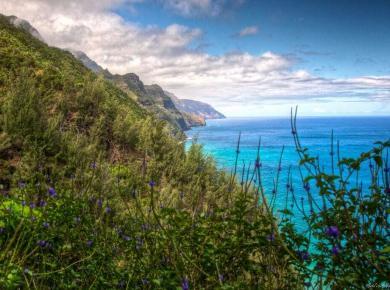
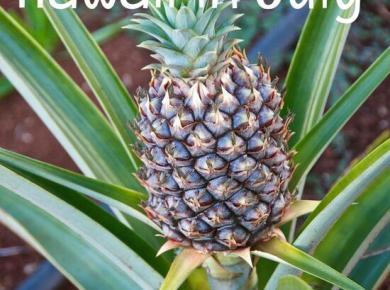
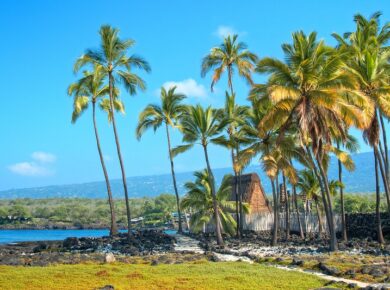
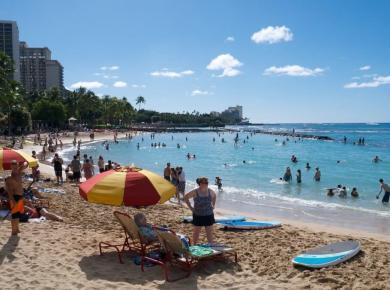
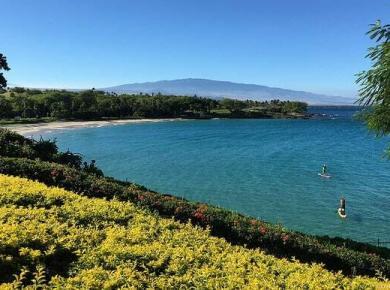
18 comments
Great interview Sheila. Makes me wish that I shelled out the extra cash for the Mauna Kea trek when on the Big Island. Next time!
Hi Sheila!
I am so happy you and Becky were able to connect for this article. She is a great resource when it comes to astronomy! The guests from the Sheraton Maui Resort & Spa always had wonderful comments about her stargazing presentations.
Aloha,
Jocelyn
@kjb – Yes! There’s always next time on the Big Island or your first time on Maui! For the independent traveler, Maui’s Haleakala is probably better because it’s not as elevated and as such is safer because it has higher oxygen levels.
@ Jocelyn – thank you so much for connecting me with Becky! I can see why Sheraton Maui Resort guest would rate her talks with high marks! Does she offer demonstrations at the Sheraton Maui on a regular schedule?
We’re visiting oahu feb 20 through feb 22, kauai feb 22 through feb 28, and maui feb 28 through mar 4. My wife is an amateur astronomer, and I’m really hoping to get her some once in a lifetime views of the stars through a telescope on Maui. I was excited to find a tour that went to the summit, just to find that it’s been canceled. I realize i am one among many tourists, but i am having trouble finding opportunities – lots of out of date info on the web. Do you have any idea how we could hook up with someone, commercial or private or public, to get or share a telescope to take advantage of Maui? We will be in the Wailea area – is the Sheraton view worth it? Is there any way to connect with someone on Haleakala?Any info or contact info greatly appreciated…
Sincerely and slightly desperately yours,
Jon Dwyer
Ohio
Hi Jon — you might want to check out the website for the Maui Astronomy Club http://www.mauiastronomyclub.org/
Also, if you wanted to try the Sheraton view, you could make an afternoon and evening of going to see the sights on the West Side of Maui. Maybe catch a great dinner in Kapalua at either Pineapple Grill or the Plantation House. Or, in Kanapali, there’s some Leilani’s is a good restaurant. Then go to the Sheraton event.
Jon – I just checked with my contact at Sheraton Maui. They aren’t offering the stargazing program at the moment. However, the Hyatt that is also in Kaanapali does. You can read more about it here: http://www.maui.hyatt.com/hyatt/hotels/activities/onsite/details.jsp?onsiteActId=424
Also, you might find some helpful information in this post:
https://govisithawaii.com/2011/02/08/stargazing-on-your-hawaii-vacation/
Thanks for the info. Big Island is so nice. Wish I could go to the telescopes soon. especially with Venus so close to us right now.
What a great article. So much info and some great links, too. Good questions Sheila and mahalo to Becky for all the extensive answers.
I was referred to the Maui Astronomy Club by one of our site’s readers last year while planning our February trip to Maui. Unfortunately, we just ran out of days (or should I say nights) to fit more stargazing in. We did make it up to Haleakala prior to sunrise to see the stars, but the ultimate thrill for me would be to be there at night.
I’m really keen on the idea of seeing the meteor shower in August next year, seeing that we’re hoping to spend the full month of August on Maui in 2010. I’m sort of surprised that stargazing does get more attention in travel guides and suggested itineraries like other activities. I’m glad it’s being featured here, though.
@Destination Paradse, in regards to Venus, I was blown away on just how bright it was in the night sky last month. I took one photo from the beach where Venus was so bright out over the horizon, it was casting a reflection in the water just like moon would do. Very cool.
@ Kris – I thought and was hoping that you might like this post. 🙂
Wouldn’t it be fun to schedule a vacation around a major night sky event? I’d LOVE to be able to do that someday! I hope you get to Maui next August for the Perseid Meteor Shower. Hmmm…maybe I need to try to talk Andy into making an August 2010 trip to Hawaii, too. 😉
Truth be told, we did actually pick the two weeks in February this year specifically because there was a new moon on the 24th and I wanted to have the darkest sky possible for taking photos at night. Then we go ahead and book too many things to do on the trip and not get out there as much as I had hoped to. 🙂
Good problems to have, I guess.
Great post! What a wealth of information! Nice photo choic too.
Congratulations by the way! I didn’t even know you won the Travel Blog award. Tsk! Shame on me! Shame on you too for not pulling my hair about it!
Hi Evelyn – Thanks. 🙂
This year I bought my nieces and nephews a star registry where you register a star in their name. Then I booked them a star gazing tour with Tradewind Tours Hawaii who takes you to a private ranch on the North Shore, so they can show them where to look for their star! tradewindtourshawaii dot com
could you please tell me what the large light in the night sky over Maui has been for the last 2 nights ( August 11 and 12). The crescent moon seemed to be just below it last night.
Many thanks,
Dorrie Gardner
Great interview. I have recently retired and am just starting out in astronomy. We will be visiting Maui in late November and plan to go star gazing and watch the sunrise on Haleakala and take at least a few good pictures. The last time we were in Maui I came across a brocher that advertised star gazing trips up Haleakala. Do you know if they are still in business?
Cheers .,. Bob
Bob –
Seeing sunrise at Haleakala is spectacular! I highly recommend it. See my tips: https://govisithawaii.com/2007/07/17/see-an-unforgettable-sunrise-at-the-peak-of-a-volcano/
I do believe there are some tour companies that offer stargazing tours to Haleakala, but they are sunset tours, not sunrise tours.
If I’m not mistaken, the Hyatt and Sheraton hotels in Kaanapali offer some stargazing programs. You might also want to contact them.
Hi thanks I’ll try to try it
Here’s a link to an astronomy calendar of celestial events: http://www.seasky.org/astronomy/astronomy_calendar_2011.html